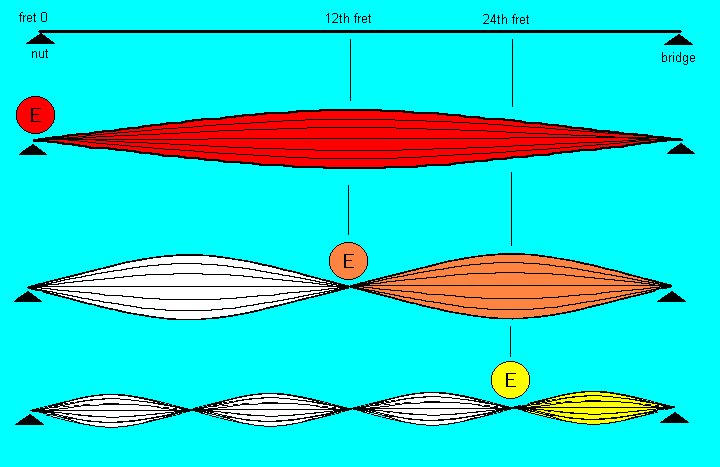
Visual Guitar TM :: Guitar, Guitar Scales, Modes, Strings, Fretboard |
::
|
C Major | C# Major | Db Major | D Major | D# Major | Eb Major | E Major | F Major | F# Major | Gb Major | G Major | G# Major | AbMajor | A Major | A# Major | Bb Major | B Major |
Several factors determine the pitch of a string, the most important being the tension and the thickness of the string. The more tension you apply, the higher the resultant pitch. Less tension results in a lower pitch. Thick strings are naturally lower in pitch than thin strings. This is why the strings get thicker as you move down to the lower notes, and why they are very thick on a bass guitar.
In the figure below, the top horizontal line represents the low E string at rest and which is assumed to be in tune. It is supported by the nut on one side, and the bridge on the other. The second figure down is the string vibrating. When it is struck, it vibrates at 82.4 times per second. This is the fundamental wave that this string produces in standard tuning. It is indicated by the red E. Click on any note to hear. If you place your finger at the halfway point and strike the string (the 12th fret, indicated by the orange E), the right half of the string will vibrate at twice the rate of the Low E at 82.4 x 2 = 164.8 times per second. This is a difference of one octave. If you now move to the halfway point of the right half, you have risen another octave (the yellow E). This E is vibrating at 164.8 x 2 = 329.6 times per second, or 4 times the Low E.
Click to see all the frequencies in pdf format.
